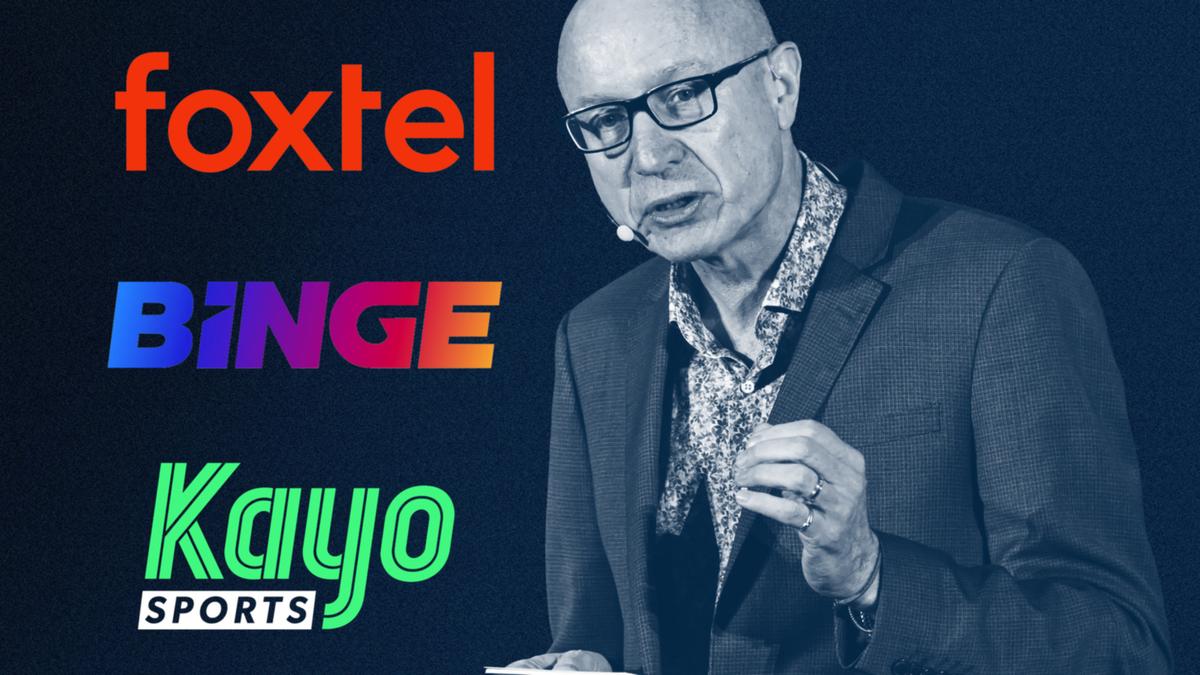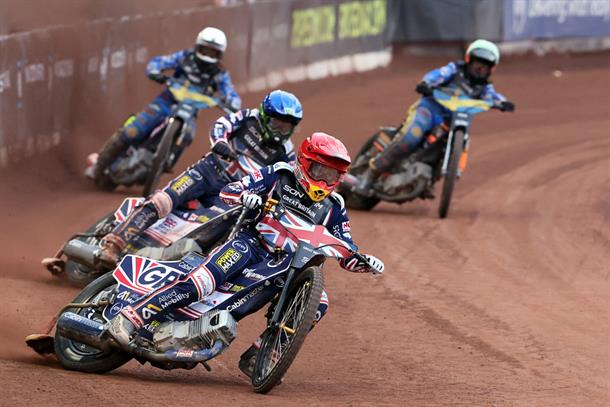They are the biggest sports marketing agency in the world. Headquartered in New York and with offices in London, Singapore and Sydney, their fingerprints have been on everything from the Premier League to the NFL, Wimbledon to the Olympics.
But just as colossal as IMG’s portfolio is their ambition for one of the newest additions to their sporting stable.
It was in May 2022 that the global giants signed a 12-year ‘strategic partnership’ with the Rugby Football League and Super League to ‘reimagine’ rugby league in the UK. Now 30 months on, IMG’s grand vision can be revealed.
‘We’d love to get to a point where rugby league is the second sport in the UK,’ Matt Dwyer, IMG’s vice president of sports management, tells Mail Sport.
‘If football is first tier, this is a solid second-tier sport with a whole lot of others in the UK. Nothing in this country can catch football, but having a general objective of being the UK’s second sport is a fair one for this sport to aim for.’
Rugby League in Great Britain is currently undergoing a major revamp under IMG agency

In May 2022, IMG signed a 12-year deal to ‘reimagine’ rugby league in the United Kingdom

At the heart of this 12-year project is Matt Dwyer, IMG’s vice president of sports management
An Ernst & Young study last year found that rugby league only had the ninth largest ‘engagement base’, when measuring the number of adults participating in a sport, following it (on TV, online or on social media) or attending matches. Rugby union, which Dwyer says should be rugby league’s ‘benchmark’, was fourth behind football, Formula One and running.
In terms of total attendance at professional sporting events in the UK, research by Two Circles found that rugby league was fifth in 2022 with 2.2million fans going to matches, while rugby union was second with 5.4m.
Dwyer’s bid to elevate rugby league to No 2, then, appears to be a tall order. But as an Australian living in Sydney, he is well placed to know the potential of the 13-a-side game, which is second only to Australian rules football when it comes to cumulative attendance Down Under.
‘The NRL shows that it’s not an unrealistic aim because 20-odd years ago, union and league were pretty similar size sports in Australia,’ says Dwyer. ‘The NRL is a gold-star example of how if people see your game, it can become really, really big.
‘Our game is basically the same as their game. We are a big believer that our game is good. But the product around it is what could improve. That’s the marketing of the sport, how it is presented, how the fans engage. That fits straight into the IMG sweet spot.’
To get more eyeballs on rugby league, a deal was struck earlier this year for the BBC to show 15 Super League games a season. IMG also helped launch a new streaming platform, Super League Plus, where fans can watch every match live, with Sky also making every game available for their subscribers.
‘You have got to find the right balance,’ says Dwyer. ‘You can’t go just solely on BBC because you are not going to get the revenue. But it’s really important from an awareness point of view. This underpins everything for us.
‘People that aren’t aware of rugby league, we need to make them aware. People that are aware of it but aren’t interested, we need to make them interested.’
In an attempt to stand out from the crowd, Super League – which was launched in 1996 – could also be given a new name. ‘A rebrand was part of our initial recommendations,’ says Dwyer.
‘When our Super League formed, we were the first one to be called that, but a whole lot of other sports then took it on as well. When you are googling, the phrase Super League is quite congested. So that is certainly a consideration.’

Super League – which was launched in 1996 – could also be rebranded to differentiate it
More crucial than a rebranding exercise, though, is improving the promotion of the sport’s stars. Dwyer cites recent research in football showing that children aged under 18 now follow an average of three football clubs, largely based on who their favourite players play for.
‘You have an existing fanbase that we need to look after – and we have got a future fanbase that we need to grow,’ says Dwyer.
‘We have some really interesting characters emerging. Look at Mikey Lewis at Hull KR or Junior Nsemba at Wigan. You need to get more people to see who these guys are and start to get some of these kids wanting to follow them on Instagram. If Bevan French score seven tries in a game for Wigan, we need to make sure as many people are seeing that as we possibly can.
‘So a lot of focus from our digital team has been on how we can help market some of these stars. The idea of marketing an individual as opposed to the club is a bit of a change for many clubs.’
A club’s digital offering is now part a grading system that IMG have controversially brought in to decide which divisions teams play in, instead of promotion and relegation. Clubs are given a score out of 20 based on five categories – fandom (which includes website visits and social media following), performance, finances, stadium and community.
The 12 highest-ranked sides make up Super League and the gradings announced last month saw Wakefield Trinity replace London Broncos in next year’s top flight. Given Wakefield won this season’s Championship and the Broncos finished bottom of Super League, the gradings ultimately achieved the same results as promotion and relegation would have done.
But Dwyer says: ‘We’ve ended up with the teams we would have ended up with anyway, but we got the added bonus of clubs upping their game off the field.
‘Grading is a means to an end. All it really is, is the stick, because the carrot hasn’t really been working for a while. We needed people to move in this direction by introducing something that forced them to do that.’
In all, 20 of the 36 clubs improved their grading scores in 12 months. Nine clubs achieved Grade A status by receiving 15 points or more.
IMG have previously stated that when there are 12 Grade A teams, they would look at increasing the size of the division to 14. ‘That’s the intention for the sport,’ says Dwyer. ‘But there has always been asterisk next to it, which is if the game can afford it.’
And there lies the biggest barrier to IMG’s bold ambition – cash. Warrington chairman Stuart Middleton recently claimed that every Super League club is losing between £1million and £2m a year. That is largely because of reduced TV revenue, with Sky’s last deal with Super League worth around £21.5m a season, almost half of what it was in 2021.

The London Broncos aren’t in Super League next year but the city is an untapped market
‘Sky had basically told the sport that it had been the same for a decade and that if it wasn’t growing or bringing in new subscribers, they didn’t need to pay that number,’ explains Dwyer.
‘That was what we inherited, so we were immediately on the back foot. It was like, “How do we get this to a number where we minimise the damage?” and that’s something we think we did a very good job of.
‘But we need to grow our revenue streams and get to a point where we can make this a sustainable sport. What does that mean in basic terms? It means we need more fans.’
Finances will again dictate whether IMG can fix rugby league’s perennial problem – the struggle to break out from its traditional northern heartlands. Following the demotion of the Broncos, there will be no Super League teams next year outside of Yorkshire and Lancashire, other than French outfit Catalans Dragons.
‘The UK is a big country of which rugby league sort of touches a corridor – the M62,’ admits Dwyer. ‘We know the data says that there’s interest in London. We call that the sleeping giant.
‘But that is the city, not the team. You can’t expect a team, the Broncos, to single-handedly grow a market. They need that central support.
‘So if you had unlimited funds, you would be spending money on trying to market the sport in London. But the sport doesn’t have the funding to be investing in London today.’
While rugby league might not have cracked the capital yet, it has made unlikely inroads in an even more difficult market – America. In March, two regular season NRL games took place in Las Vegas in front of a crowd of more than 40,000. Next year, Super League is gatecrashing the party in Sin City, with Wigan and Warrington playing their season opener there.

Wigan Warriors and Warrington Wolves will kickstart their season in Las Vegas next year
‘It draws attention to our sport,’ says Dwyer. ‘The interest in Australia was really high last year and I think we will get a similar impact for our sport as well because it’s something new and different. To be involved in such a tier-one event can only be a positive for our sport.’
More critical than taking the domestic league overseas, however, is raising the profile of the international game. Since the home World Cup in 2022, England have only played Test series against Tonga and Samoa, plus two mid-season matches with France.
IMG are now looking at replacing the low-key mid-season internationals with a War of the Roses clash, reprising the Yorkshire and Lancashire fixture which was once a staple of the calendar, having seen the success of the State of Origin in Australia. England are also set to host world champions Australia next autumn in the first Ashes series in 21 years, with one match likely to be staged in London.
‘Where’s the growth for this sport from a global point of view? The international game is really key,’ admits Dwyer. ‘Rugby union is a long way ahead there, but we really feel there is growth potential there if we can make that work.
‘If the people can get behind an England team, even the casual fans. that’s important. England need to be playing the best teams as much as they can.’

Growing international rugby league in England is a key focus of IMG within their 12-year plan
Dwyer has ruled out any radical rule changes in a desperate attempt to ignite interest in rugby league. ‘I’m not going to just introduce forward passes and make it like the NFL, or stick a club in Birmingham or Brighton, or do a Nines tournament or the rugby league equivalent of the Hundred,’ he insists.
But he has defended the speed of IMG’s work, amid criticism from some quarters, with even Rugby League Commercial’s chief executive, Rhodri Jones, stating last month he wanted to see a ‘return on investment’, having paid IMG £450,000 to date.
‘Building a fanbase is not just click your fingers and there it is,’ adds Dwyer. ‘It is slow and steady to an extent. If this had been come in and do a, b and c and the sport will double in size, we’d have done a two-year deal and we’d be off doing the next project. But sport doesn’t work like that, especially in a very competitive market in that tier two.
‘That’s why we did a 12-year deal, but we are very much focused on growing the sport. I’m Australian and a rugby league fan, so this one is personal for me. I want to see this work because it’s a sport that I love.’






